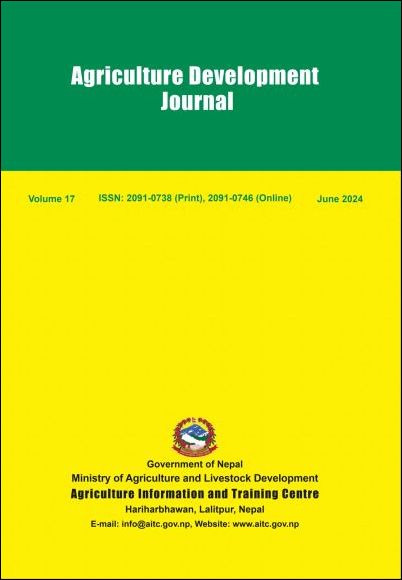Understanding Allocation and Farmers’ Access to Varied Level of Agricultural Input Subsidies from Different Tiers of Government: A Case Study in Kavrepalanchowk District, Nepal
DOI:
https://doi.org/10.3126/adj.v17i1.66445Keywords:
Access, Delivery mechanism, Government subsidies, Multinomial regression, Subsidy recipientsAbstract
Government support for essential agricultural services, such as agricultural input subsidies, is vital for empowering smallholder farmers. This study explores distribution and the factors affecting farmers access to varied level of government agricultural input subsidies in Kavrepalanchowk district, Nepal. The study relied on survey data from 219 randomly selected households. Results showed that 72 percent, 8 percent, and 20 percent of sampled households received less than NRs 15,000, NRs 15,000 to 30,000, and more than NRs 30,000 in input subsidies per year, respectively. Among the recipients of the input subsidy, the mean subsidy for electricity, chemical fertilizers, agricultural machinery, interest subsidy, and cash subsidy for the GI tunnel were NRs 4,061, 7,143, 35,633, 67,500, and 4,72,000, respectively. Results from a multinomial regression show that households with higher income, farms near roads, and registered farms receive a higher level of input subsidies. It is recommended that farmers register their farms either as a firm or company or as farmer's groups or cooperatives. To effectively perform their roles, there is a need to review the subsidy delivery mechanism, ensuring its reach to the most constrained farmers.




